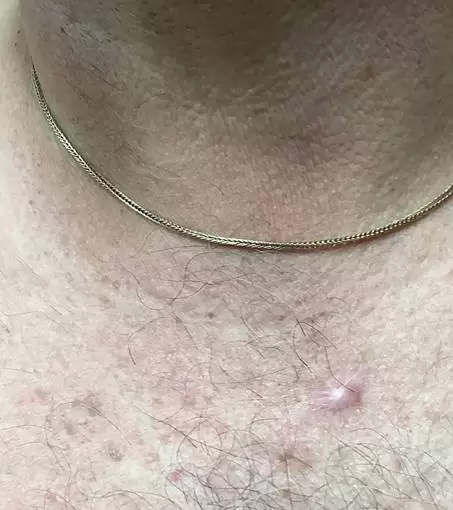Your 47-year-old neighbor shows you a tender growth on his left central anterior neck. He thinks it is skin cancer. What do you think?

ANSWER: Although this growth could be a skin cancer, the key to the diagnosis is your neighbor’s medical history. Your neighbor reports that he had a non-cancerous (benign) growth removed from the same site by his dermatologist two months earlier. Your neighbor’s growth is a hypertrophic scar from his previous surgery. No surgery is required as this scar will flatten out naturally over time. If the area remains tender, low dose cortisone can be injected into the area every month for one or more months. If the growth persists, a repeat skin biopsy may be needed.
It is estimated that 1 in 5 Americans will develop skin cancer during their lifetime.
Anyone can get skin cancer, regardless of skin color. It is estimated that one in five Americans will develop skin cancer in their lifetime. When caught early, skin cancer is highly treatable. You can detect skin cancer early by following dermatologists’ tips for checking your skin. Download the AAD’s body mole map to document your self-examination, or the How to SPOT Skin Cancer Infographic and know what to look for when checking your spots. If you notice a spot that is different from others, or that changes, itches or bleeds, you should make an appointment to see a dermatologist.
- Examine your body front and back in the mirror, then look at the right and left sides with your arms raised.
- Bend elbows and look carefully at forearms, underarms, and palms.
- Look at the backs of your legs and feet, the spaces between your toes, and the soles of your feet.
- Examine the back of your neck and scalp with a hand mirror. Part hair for a closer look.
- Finally, check your back and buttocks with a hand mirror.
Tags:
